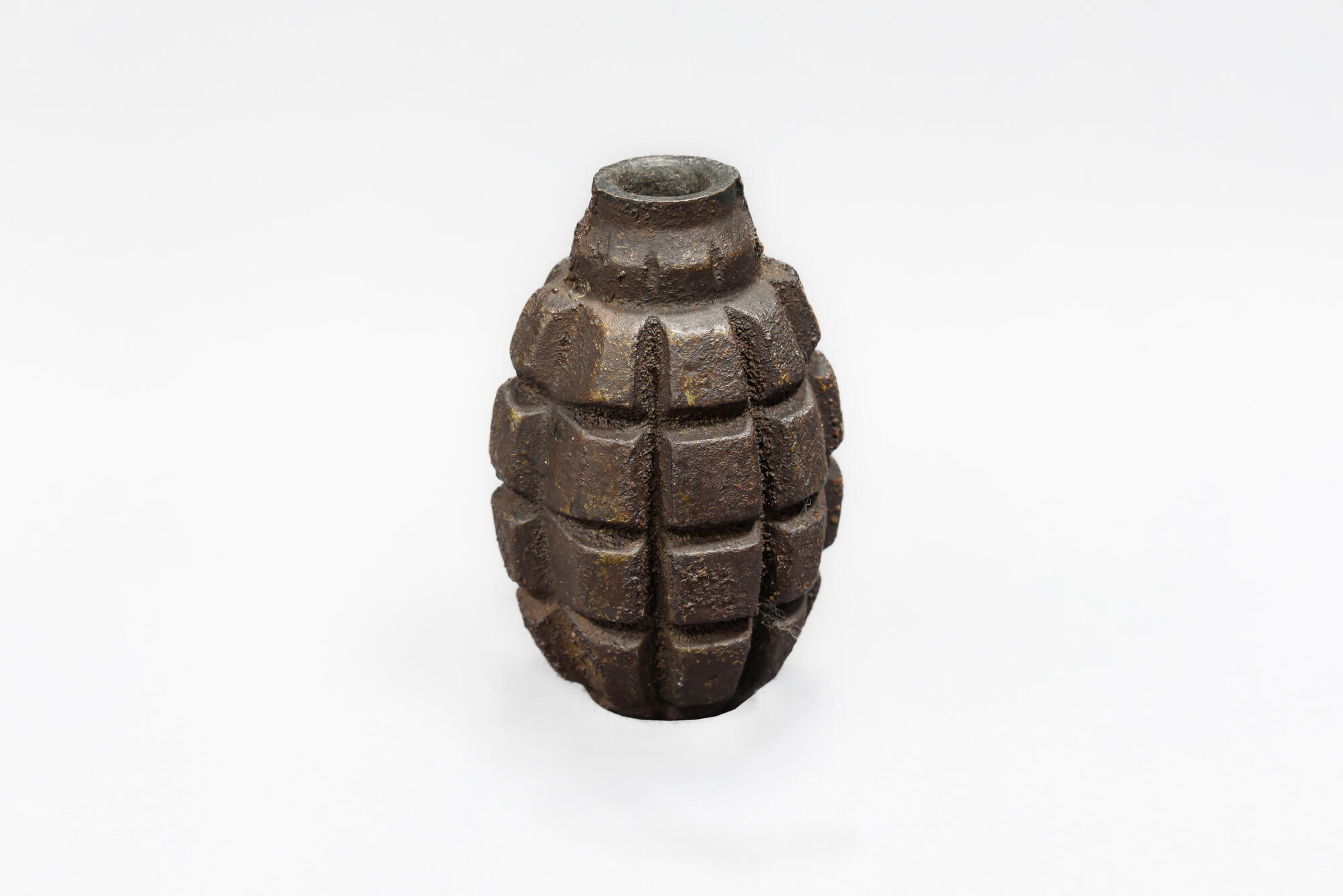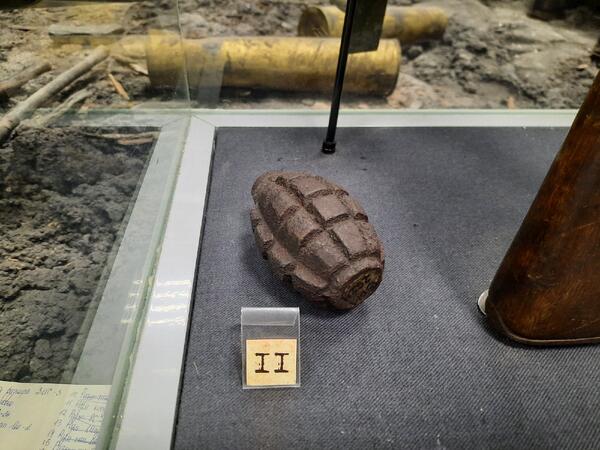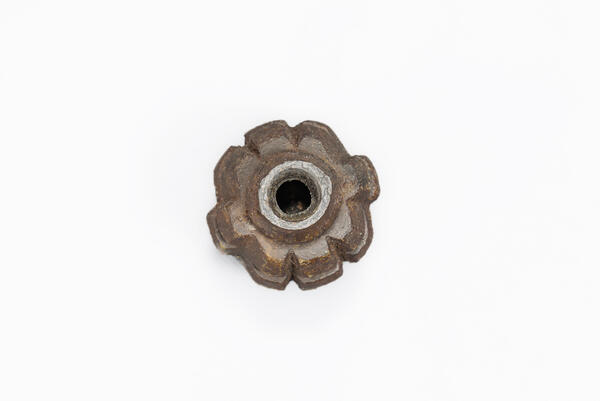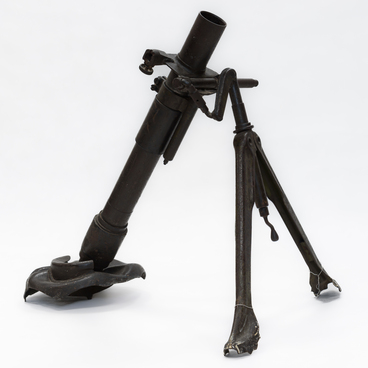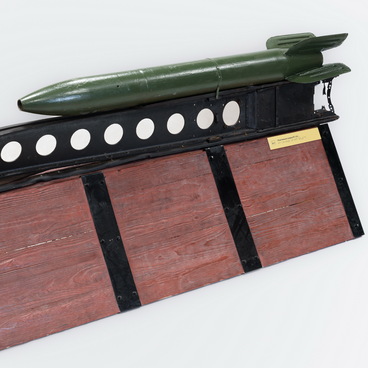The F-1 fragmentation grenade is a time-delay hand grenade designed to engage enemy manpower mainly in defensive combat. When the grenade explodes, the fragments produce a large injury radius of up to 200 meters, so it can be thrown only from a sheltered position, an armored personnel carrier or a tank.
The grenade was developed in 1939 by the engineer Fyodor Khrameyev based on the design of a French fragmentation grenade. The F-1’s design is relatively simple. It consists of a body, an explosive charge and a fuse. The cast-iron body of the grenade contains an explosive charge and a fuse and has longitudinal and transverse grooves, along which the grenade explodes into fragments. In the upper part of the body there is a threaded hole for screwing in the fuse. When storing, transporting and carrying the grenade, a plastic plug is screwed into this hole. The inner cavity of the body is filled with an explosive charge. The grenade uses the UZRG fuse, which detonates the explosive material and the grenade explodes into fragments.
The F-1 grenade always explodes when it falls on a hard surface, as well as in mud, snow and water. A plethora of fragments forms during the explosion, and they disperse in different directions. The fragments of the F-1 grenade are powerful enough to destroy enemy manpower within a radius of up to 200 meters. Due to its reliability, slick design and great characteristics, the F-1 grenade was very popular among Red Army soldiers. Every infantryman tried to carry five to ten grenades, saving them mainly for assault operations and to repel enemy attacks.
The combat grenade was painted green (from khaki to dark green). The training grenade was black with two white (vertical and horizontal) stripes. In addition, it had a hole in the bottom. In the training fuse, the safety pin’s pull ring and the lower part of the lever were scarlet.
The F-1 grenades were packed in wooden boxes with 20 grenades in each, the fuse hole was closed with a plastic plug. The box weighed 20 kg. The fuses were stored in cans, so the boxes also contained a can opener. The purpose of packing the fuses in a sealed container was to ensure maximum safety while they were in storage, and to prevent corrosion and oxidation of the components of the explosive mixture.
During the war years, about 137,924,000 fragmentation grenades were produced.
The grenade was developed in 1939 by the engineer Fyodor Khrameyev based on the design of a French fragmentation grenade. The F-1’s design is relatively simple. It consists of a body, an explosive charge and a fuse. The cast-iron body of the grenade contains an explosive charge and a fuse and has longitudinal and transverse grooves, along which the grenade explodes into fragments. In the upper part of the body there is a threaded hole for screwing in the fuse. When storing, transporting and carrying the grenade, a plastic plug is screwed into this hole. The inner cavity of the body is filled with an explosive charge. The grenade uses the UZRG fuse, which detonates the explosive material and the grenade explodes into fragments.
The F-1 grenade always explodes when it falls on a hard surface, as well as in mud, snow and water. A plethora of fragments forms during the explosion, and they disperse in different directions. The fragments of the F-1 grenade are powerful enough to destroy enemy manpower within a radius of up to 200 meters. Due to its reliability, slick design and great characteristics, the F-1 grenade was very popular among Red Army soldiers. Every infantryman tried to carry five to ten grenades, saving them mainly for assault operations and to repel enemy attacks.
The combat grenade was painted green (from khaki to dark green). The training grenade was black with two white (vertical and horizontal) stripes. In addition, it had a hole in the bottom. In the training fuse, the safety pin’s pull ring and the lower part of the lever were scarlet.
The F-1 grenades were packed in wooden boxes with 20 grenades in each, the fuse hole was closed with a plastic plug. The box weighed 20 kg. The fuses were stored in cans, so the boxes also contained a can opener. The purpose of packing the fuses in a sealed container was to ensure maximum safety while they were in storage, and to prevent corrosion and oxidation of the components of the explosive mixture.
During the war years, about 137,924,000 fragmentation grenades were produced.
